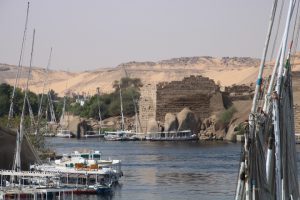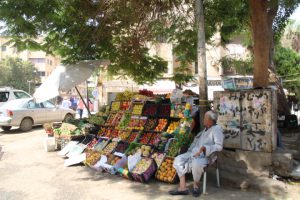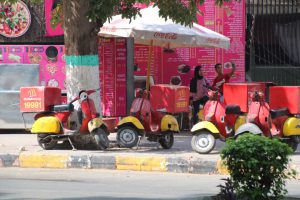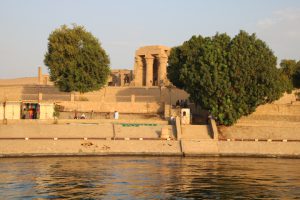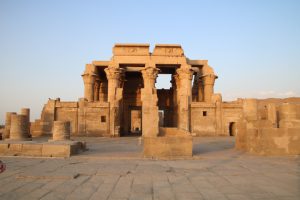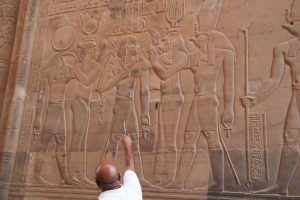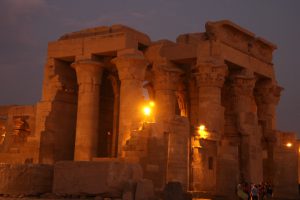Our journey along the Nile starts in earnest today. As our ship is small it reminds us of the early days of Nile cruising when a steamer like ours would take 3 weeks to reach Aswan from Cairo. A sailing boat of that era would take 6 to 12 weeks because it is against the wind and the current. Highlights of such cruises was the introduction to the Europeans of the then new archaeological discoveries of the Pharaonic period. Thomas Cook played an important role in the development of Egyptian travel, having once owned all of the steamers plying the river.
Before leaving Aswan we explored, on foot, the Corniche An Nil, the riverside road to the Old Cataract Hotel, retracing our steps through part of the Sharia As Souq.
Upon departure we witnessed timeless scenes of lush green fields, donkeys, camels and water buffalo near the edge of the river and the towering sandstone escarpment fronting the Western Desert at the edge of the alluvial plain.
A new suspension bridge loomed ahead. It is constructed in readiness for the development of ‘New Aswan’ where the overflow population of Aswan will be accommodated.
The meandering river, though the bends are big ones, is cultivated on both sides of our ship. In places there is more land to the west than to the east with big settlements alternating sides.
After a couple of hours the settlement of Kom Ombo appears and we dock about 30 minutes before sunset. Here we tour the riverside temple to Horus the Elder and Sobek, the crocodile god. It is a Ptolemaic temple and like Philae is relatively new in terms of Egyptian temples. It is symmetrical along the main axis with the western side dedicated to Horus and the eastern to Sobek.
As darkness falls we slip our moorings to travel north to Edfu.



